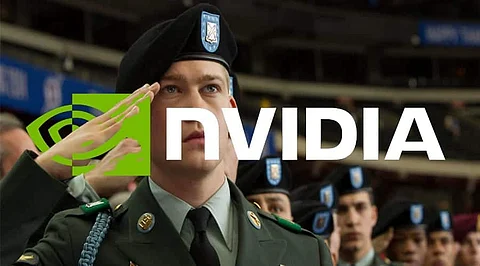
- Insights
- Cryptocurrencies
- Stocks
- White Papers
- Industry
- Geography
- Insights
- Cryptocurrencies
- Stocks
- White Papers
- Industry
- Geography


Nvidia Corporation is an American multinational technology company incorporated in Delaware and based in Santa Clara, California. It designs graphics processing units (GPUs) for the gaming and professional markets, as well as systems on a chip unit (SoCs) for the mobile computing and automotive market.
The industry-standard frame rate for feature films is 24 FPS. The Billy Lynn story, though, involves many high-paced action war scenes. If shot at a standard rate, the images would suffer motion stutter, causing headaches and eyestrain for the viewer. According to Ben Gervais, production systems supervisor for the film, "Ang was looking to solve the problem of motion stutter, which can occur both in 3D and at 24 frames. Viewing motion stutter sends signals to your brain that something is not right. The answer was to increase the frame rate. But that comes with challenges of its own." Combining the advanced technology of 120 FPS with 3D in a high dynamic range produces five times the amount of data of a standard film. Adding stereo 4K increases it to 10 times more data than other productions. Over the course of 47 shoot days, 400 terabytes of data were produced. And neither the budget nor the deadlines could suffer, so all that data needed to be processed just as quickly.
Innovation and creative thinking needed to happen at every level to realize Ang Lee's vision for Billy Lynn. NVIDIA GPUs were incorporated across almost all stages of the film's production, including on-set dailies, colour, final finishing, and finally a projection of 120 FPS screenings.
Colorfront's production team needed to process an entirely new level of data for on-set dailies, requiring a configuration with customized software to ensure they could move files as fast as possible. "There are a great many things that NVIDIA GPUs are made for, allowing us to work faster than on a CPU, including delayering, scaling, grading, and colour-space conversion to transform the native colours of the camera on a regular computer monitor," said Bruno Munger, director of business development at Colorfront. For a fully interactive colour-grading experience, the production also required a base light system driving dual Christie Mirage 4K 120 Hz 3D stereoscopic digital projectors. These are different from typical digital cinema projectors in that they're often used for highly immersive user experiences such as theme park rides. Using nine NVIDIA GPUs for rendering, display, and a user interface—plus an NVIDIA Quadro Sync card for syncing the signal to the projectors—FilmLight created a custom version of their HFR Baselight X system. This could playback both eyes at 4K 120 Hz, while at the same time allowing creative multilayer grading plus sophisticated 3D geometry correction. By providing the very high data rates for real-time uncompressed playback, combined with an interactive grading system, Baselight X provided a smooth, immersive experience. Steve Chapman, CEO, and co-founder of Filmlight said, "We use NVIDIA GPUs all in our grading systems to provide the highest quality in professional colour correction. The multi-GPU configuration in the Baselight X system was engineered to allow those same operations to occur at this high resolution and frame rate on top of stereo geometry correction."
While 3D and 4K are increasingly common technologies, they're rarely combined. The addition of 120 FPS produced an immersive, hyper-real experience for Billy Lynn unlike anything ever depicted on screen. This technology is guaranteed to have an impact on how future films are shot and processed. With the extra clarity added, standard movie tricks of the past came through as fake—makeup couldn't be worn, lighting and staging had to be re-thought, and the acting had to be more subtle and realistic. GPU-accelerated processing powered each step of the revolutionary workflow created for the film, enabling the handling of huge amounts of data. The resulting experience goes beyond simply observing the print of a film and more like perceiving reality, a visceral event free of eye strain, motion sickness, or distractions. The 120 FPS frame rate is a multiple of 24 (used for cinema) and 30 (used for television), making mastering for both TV and film simpler than usual. Constant collaboration between the studio and the technical and creative teams enabled the efficient use of technology to tell the story of Billy Lynn in a way that's both emotionally moving and comfortable for viewers to watch. It's truly a watershed moment in filmmaking from one of the most visionary directors of our time. The techniques and workflow he and the team created a promise to impact the film industry for years to come.
